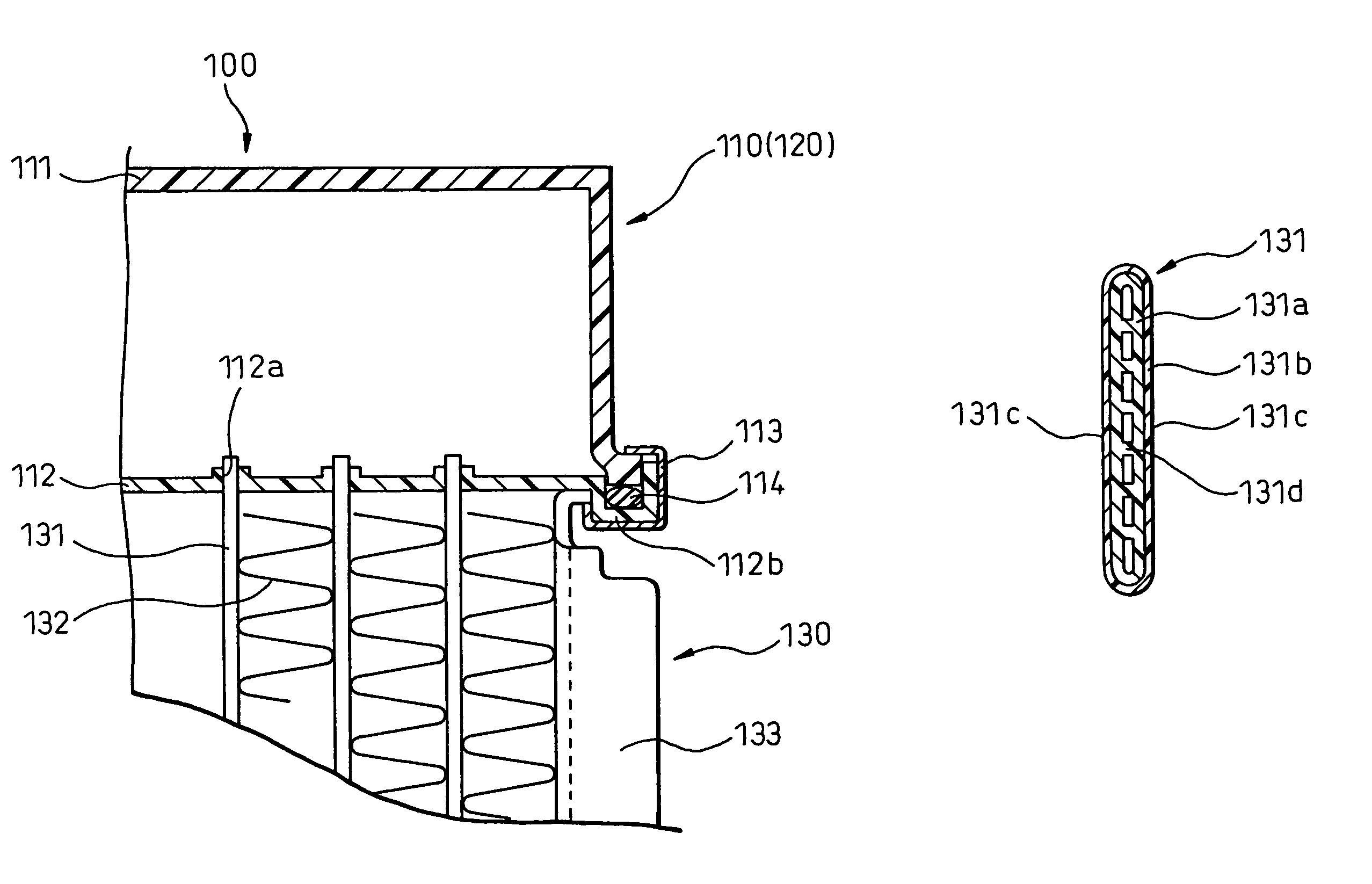Heat exchanger
a technology of heat exchanger and heat transfer material, which is applied in the direction of heat exchange apparatus safety devices, electrochemical generators, lighting and heating apparatus, etc., can solve the problems of difficult to apply insulating material in a state free of pinholes, deteriorating heat transfer performance, and difficult to achieve the effect of reducing the number of pinholes and reducing the number of holes
- Summary
- Abstract
- Description
- Claims
- Application Information
AI Technical Summary
Benefits of technology
Problems solved by technology
Method used
Image
Examples
first embodiment
[0026]A heat exchanger according to a first embodiment of the invention is shown in FIGS. 1 to 4. This embodiment is an application of the invention to a radiator 100 for cooling the cooling water passed through a fuel-cell 10. This radiator is mounted on a fuel-cell powered vehicle having a motor driven with the fuel-cell 10 as a power supply. FIG. 1 is a schematic diagram showing the whole fuel-cell cooling system according to the invention, FIG. 2 a front view showing a general configuration of a radiator 100, FIG. 3 an enlarged sectional view showing the neighborhood of the joint between tubes 131 and a plate portion 112, and FIG. 4 a sectional view showing one of the tubes 131.
[0027]First, the cooling system of the fuel-cell 10 is explained briefly with reference to FIG. 1. The fuel-cell 10 generates electric power by a chemical reaction between hydrogen and oxygen, as is well known, and includes a fuel cell stack having a plurality of series-connected cells with high polyelect...
PUM
| Property | Measurement | Unit |
|---|---|---|
| temperature | aaaaa | aaaaa |
| heat conductivity | aaaaa | aaaaa |
| structure | aaaaa | aaaaa |
Abstract
Description
Claims
Application Information
 Login to View More
Login to View More - R&D
- Intellectual Property
- Life Sciences
- Materials
- Tech Scout
- Unparalleled Data Quality
- Higher Quality Content
- 60% Fewer Hallucinations
Browse by: Latest US Patents, China's latest patents, Technical Efficacy Thesaurus, Application Domain, Technology Topic, Popular Technical Reports.
© 2025 PatSnap. All rights reserved.Legal|Privacy policy|Modern Slavery Act Transparency Statement|Sitemap|About US| Contact US: help@patsnap.com



